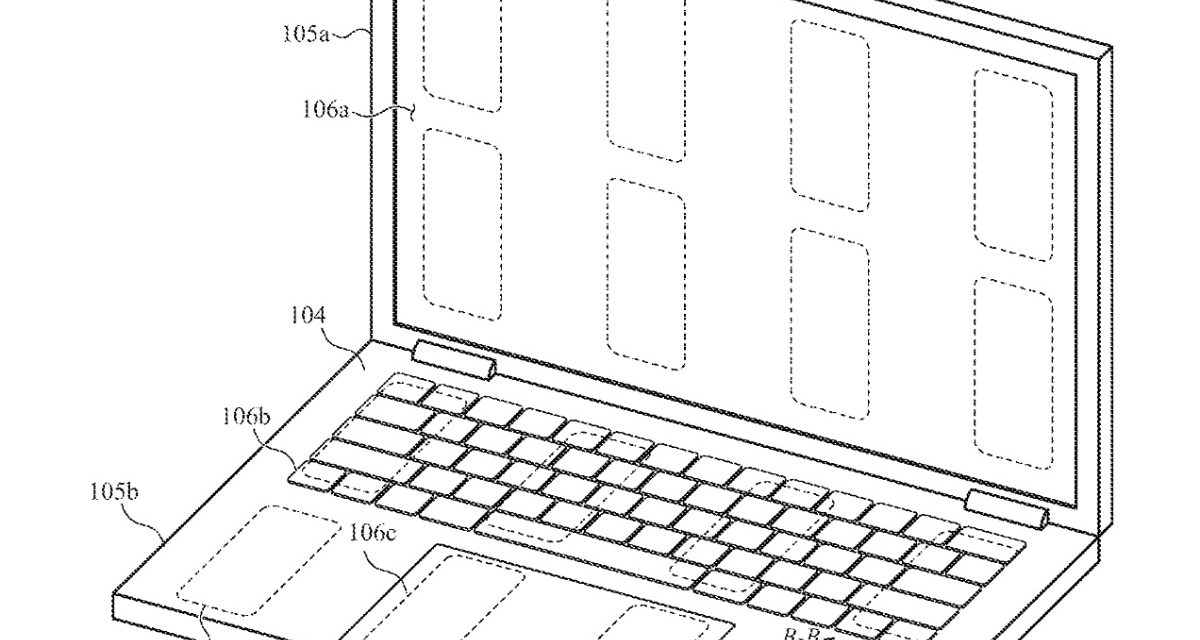Apple has applied for a patent (number US 20230142264 A1) that hints at future Mac laptops with touch screens and haptic feedback. The patent filing is dubbed “haptic structure for providing haptic outputs at an electronic device.”
About the patent filing
In the patent filing, Apple notes that electronic devices such as laptops, tablets, and smartphones often have different ways of notifying users of different events that occur. This can include playing sounds, providing haptic outputs such as a vibration, displaying a visual notification, and so on. The haptic output may be provided by an actuator that utilizes a vibratory motor or an oscillating motor.
However, Apple says that these vibratory motors typically vibrate the entire electronic device and are not able to provide a localized haptic output. Further, typical vibratory motors tend to be bulky, and it may be desirable to have haptic structures that can be positioned in smaller spaces and/or take up less room.
Though the company has previously and insistently denied plans for a laptop with a touch screen, Apple is at least investigating solutions to the above-mentioned problems. And those solutions involve sensors that “detect an input” — in other words, a touch screen.
Summary of the patent filing
Here’s Apple’s (very technical) abstract of the patent filing: “Embodiments are directed to an electronic device that includes a cover and a haptic module positioned below the cover. The haptic module includes a substrate positioned below the cover and offset from the cover, a spacer positioned between the substrate and the cover and coupling the substrate to the cover, and a piezoelectric element positioned on a surface of the substrate and offset from the cover to define a gap between the piezoelectric element and the cover.
“The electronic device can also include a sensor coupled to the cover and configured to detect an input, and a processing unit operably coupled to the piezoelectric element and configured to cause the piezoelectric element to deflect the cover in response to the sensor detecting the input.”
Article provided with permission from AppleWorld.Today





